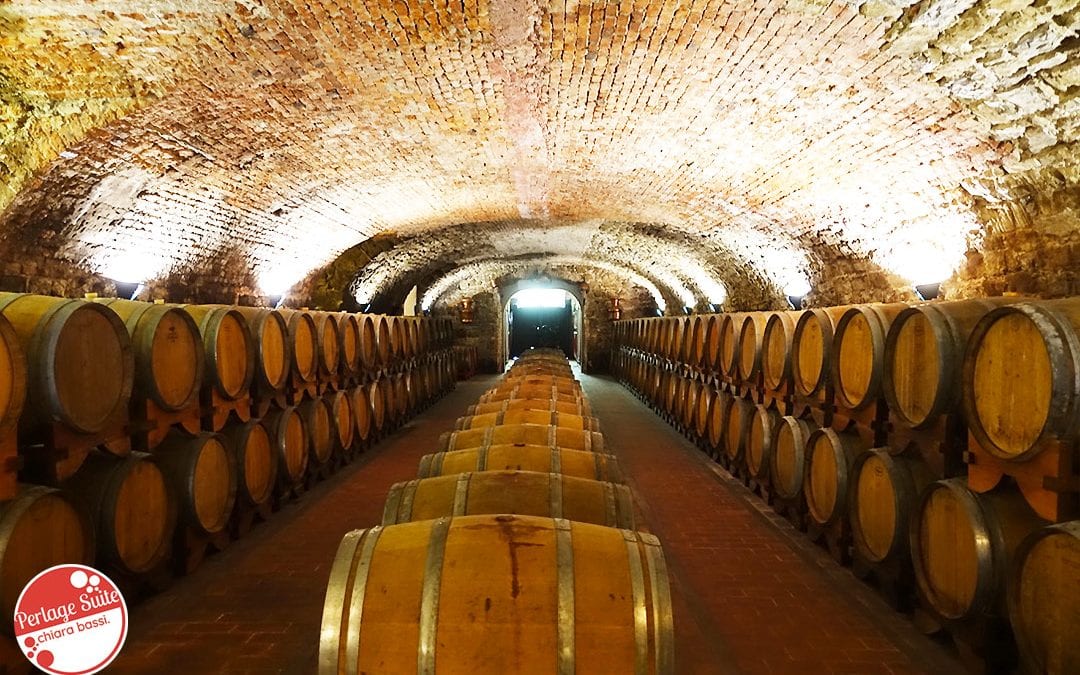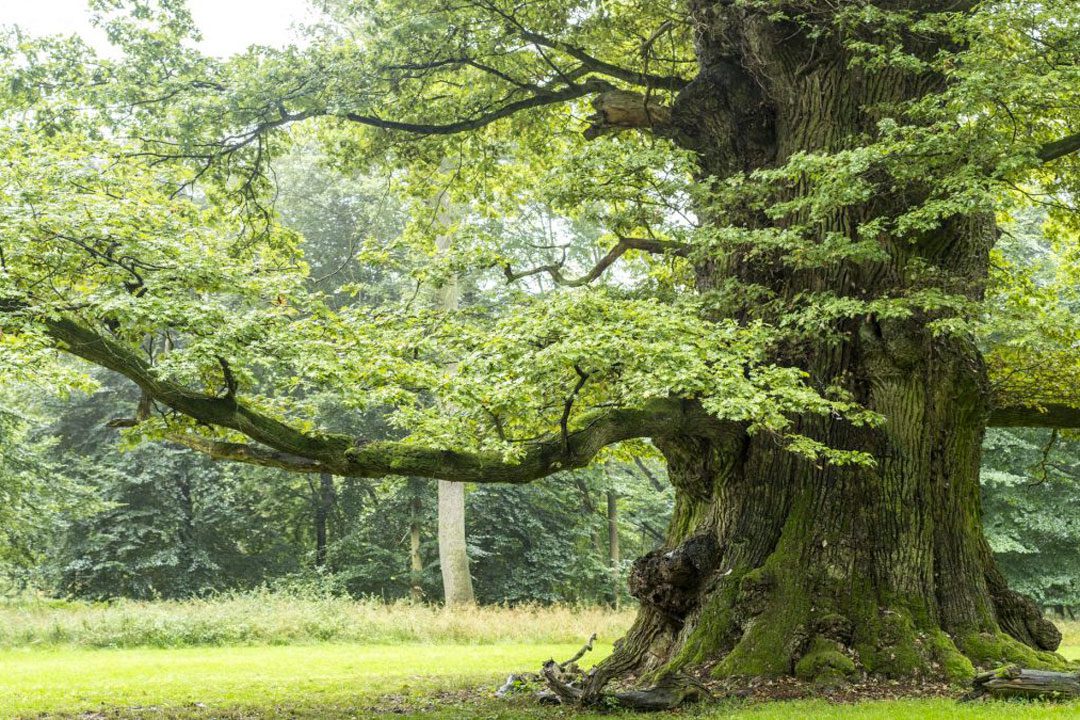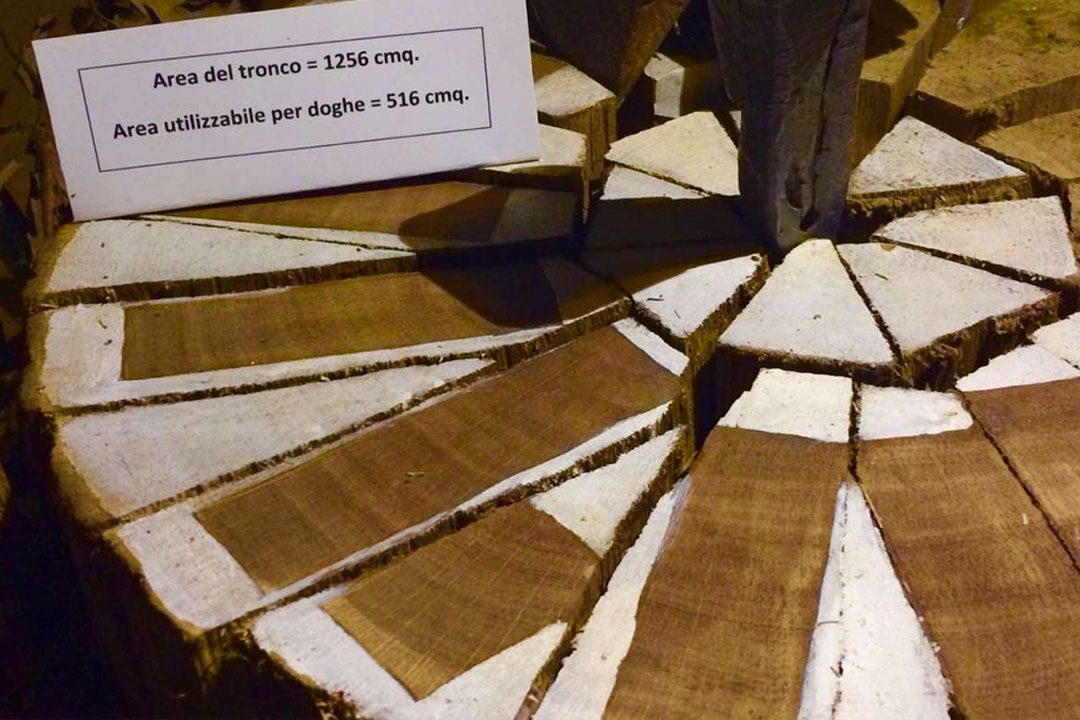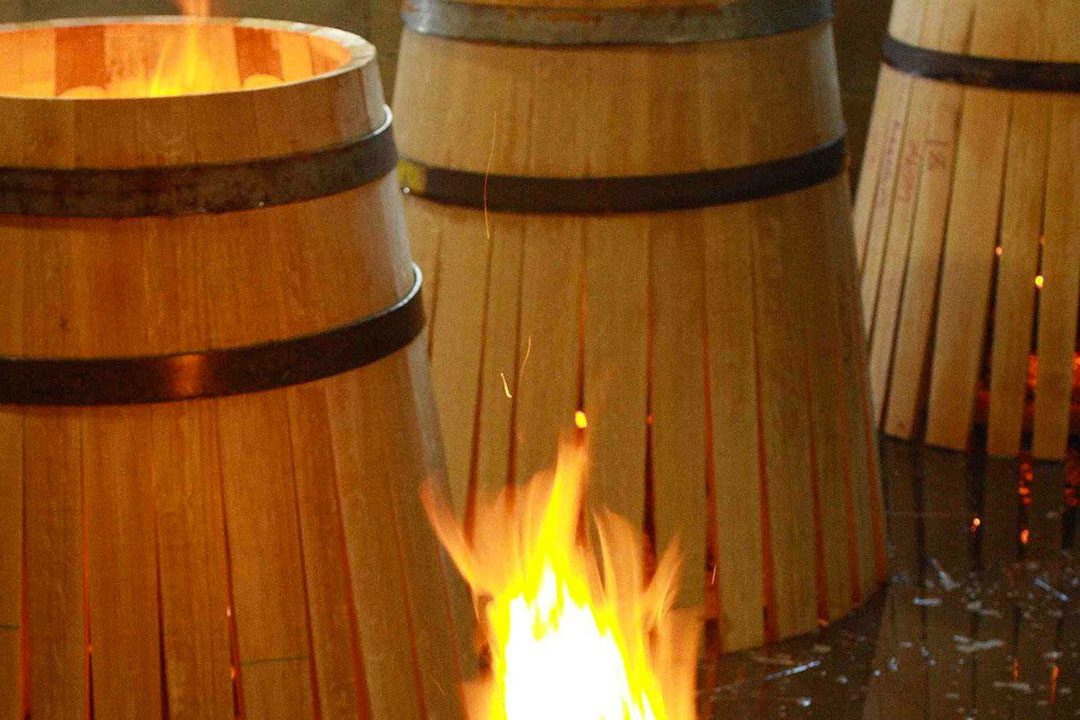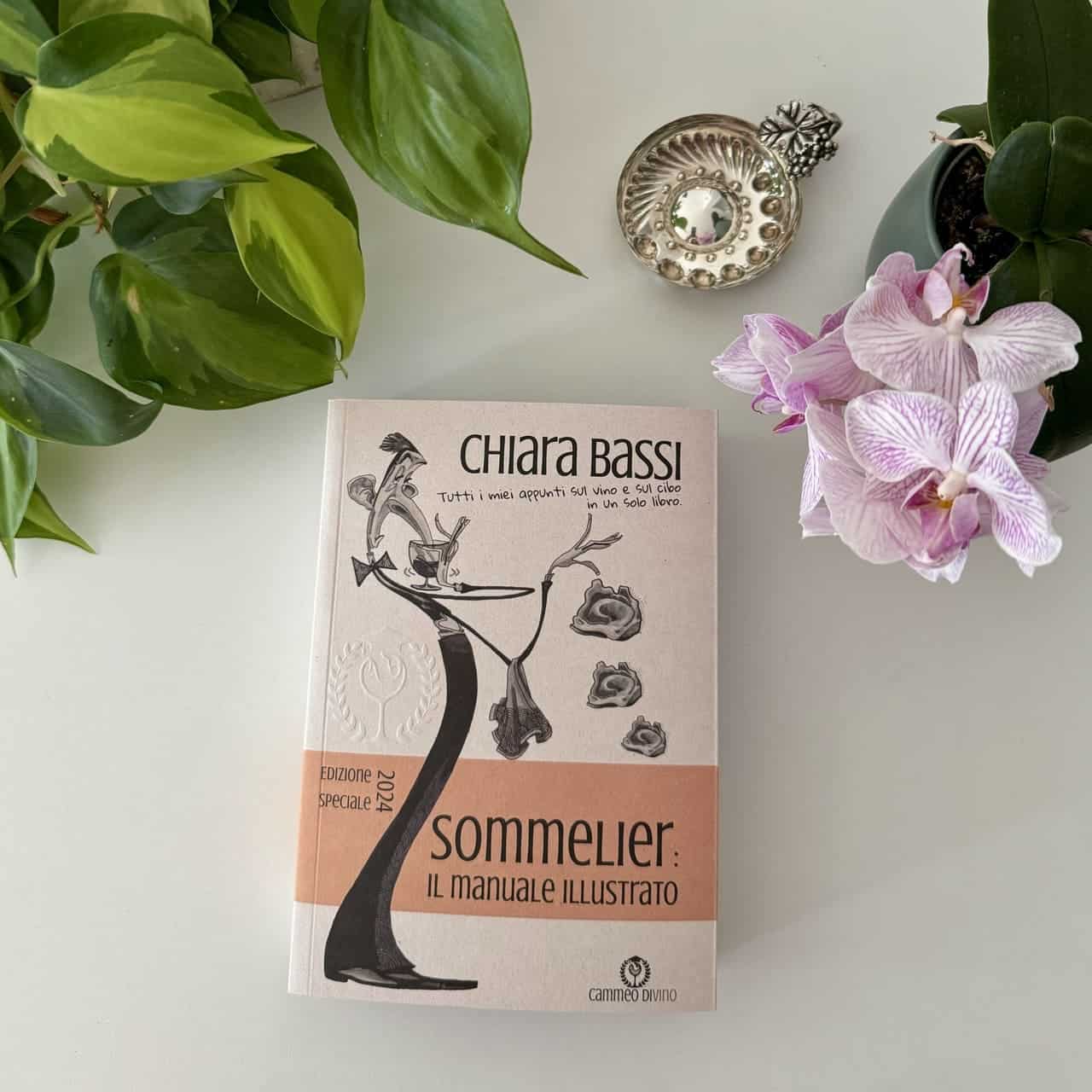La cask (from the French 'carat') is a small wooden cask with a capacity normally between 225 and 228 litres. The fermentation and/or ageing of wine in such small-capacity barrels allows for greater oxygenation of the contents than in a larger barrel, by virtue of the volume/contact surface ratio, as well as releasing typical tertiary aromas.
After racking and before bottling, the wines undergo a period of maturation that can last from a few months in steel vats (intact character of the vine, fresh aroma and taste) to several years in wooden barrels of different capacities (a complex bouquet is created with typical woody scents).
Wood allows very slow oxygen exchanges that cause changes in the colour, aroma and taste of the wine, which acquires warmer colour tones and nuances of butter, vanilla, dried fruit, tea and tobacco. The purple and lively ruby hues of red wines turn towards garnet or orange tones because in the presence of oxygen, tannins and anthocyanins oxidise, polymerise into long chains and, to some extent, precipitate, generating a less vivid but more stable colour. In white wines, the colour changes from the cooler tones of straw yellow to golden, fading to amber and topaz in some dessert or liqueur wines. The bouquet is enriched with evolved scents, with ethers (alcohol-alcohol reactions), esters (acid-aldehyde reactions) and acetals (lactone-other reactions) that give nuances of spices, jams, dried fruit and fruit under spirits, dried flowers and leather, fur and coffee, cocoa and tobacco. During resting in wood, the wine's taste becomes softer and more balanced because the acids partly transform and combine while the young tannins in the skins change their structure, polymerise and precipitate.
How does wood influence the evolution of wine?
Resting the wine in barrels sur lie, i.e. on its own fermentation yeasts, protects it from oxidation and enriches its structure and perfume, especially if botonnage, i.e. periodic stirring of the wine that brings the yeasts into suspension, is carried out.
The evolution of wine in barrels is faster than that of wine in large barrels because the ratio between the surface area of the wood and the volume of the wine is greater. Wood intervenes directly in the evolution of the wine by releasing less aggressive ellagic tannins than those of the grapes, which make it more elegant also because they increase the condensation of the tannins derived from the grapes, which are therefore less hard and astringent. The choice of letting the wine rest in large or small casks is a question of objectives.
Each wood species gives its characteristic touch, although nowadays oak is mainly used. The wood used to make barrels must be seasoned for 24-36 months. For barrels of lower quality, wood that has been seasoned 3-12 months is used with the help of kilns.
You can now subscribe to my newsletter or scroll down the page to continue reading the article!
New barrels or used barrels?
The wood can give the wine distinct notes of melted butter, vanilla, spices, exotic fruit, roasted almonds, coffee, smoked.
In the first year of use the new barrel can give up to 50 % of releasable substances, i.e. approximately 100-150 mg of tannin, which is added to the amount present in the must (1500 - 2000 mg).
In the case of the second or third passage barrique the effect of the barrique is much less intense and the flavour and aroma of the wine are only partially affected.
So the choice depends on the type of wine you want to make.
Types of wood
The woods used for barrels are different with important variations for the character of the wine. The finest woods are obtained from Oak, which can be French or Slavonian (Croatia).
Loire Valleyslow-growing Quercus sessilis (oak) forests with low-porous wood, rich in vanilla aromas and low in sweet tannins -> great white wines.
Foresta of Tronçaisparticularly in the Allier department, oak from very fine-grained woods suitable for long evolution (these are the best woods) -> important red wines.
Neversfinely porous and somewhat richer in tannins, but still sweet.
Limousin & PoitouFaster-growing Quercus robur with coarser porous wood rich in tannins -> red wines. Particularly in the Limousin, in acidic and calcareous soils, an oak grows with a coarse-pored and very aromatic wood that risks overpowering the personality of the wine, but is perfect for the maturation of the Cognac.
Champagne, Alsace & Lorrainewoods rich in robust tannins that blend perfectly with the structure of the great red wineswhile the fine porosity and broken wood from the Vosges make it very popular in California and New Zealand.
Pennsylvania & Minnesota: Quercus alba hardwood, less elegant and coarse-grained, rich in aromas and coconut notes, widely used in Australia, Spain and the south of France -> structured red wines.
How is the barrel prepared?
- SPLITTING / CUTTINGThe best woods are split and not sawn, but unfortunately this involves a considerable waste of material;
- SEASONINGwood strips are seasoned in the open air, where they are exposed to sun and rain for between 2 and 4 years. The climate of the place of maturation is traditionally a very important factor in the quality of the wood: on the one hand, the rain helps to disperse unwanted tannins with a bitter taste, on the other hand, the sun's UV rays release free radicals that help the wine oxidise.
- CUTthe strips are cut into staves: a barrel consists of 25/30 staves joined together by metal hoops;
- TOASTINGtoasting means overheating the inside of the staves of the cask during its assembly at a temperature of 150-200 °C. Traditionally, it is done manually, simply by passing a flame inside the cask not yet fully assembled. Depending on the time and intensity of the flame, we tend to categorise toasting into four classes: LIGHT (about 5 minutes) which tends to develop the secondary aromas of the wine, fruity (ripe fruit), floral and vanilla; MEDIUM (up to 10 minutes) which balances secondary and tertiary scents; STRONG (up to 20 minutes) which develops a dominance of tertiary scents, including coffee, chocolate and leather;
- FINALThe two ends of the staves are filled with swamp cane to make the barrel waterproof. A hole is drilled for the tap and the barrel is filled with water to see if there are any leaks to plug.
I hope you enjoyed this in-depth study on barrels and types of wood!
Cheers 🍷
Chiara

